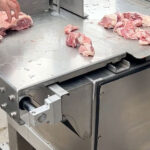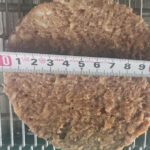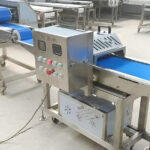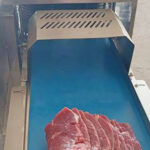O meatball production manufacturing process is a vital part of modern food processing operations, offering efficient and scalable solutions for meat-based product manufacturers. As demand increases globally for ready-to-cook or ready-to-eat meatballs, food factories are turning to advanced automation and integrated linha de produção de almôndegas systems to improve consistency, higiene, and output capacity.
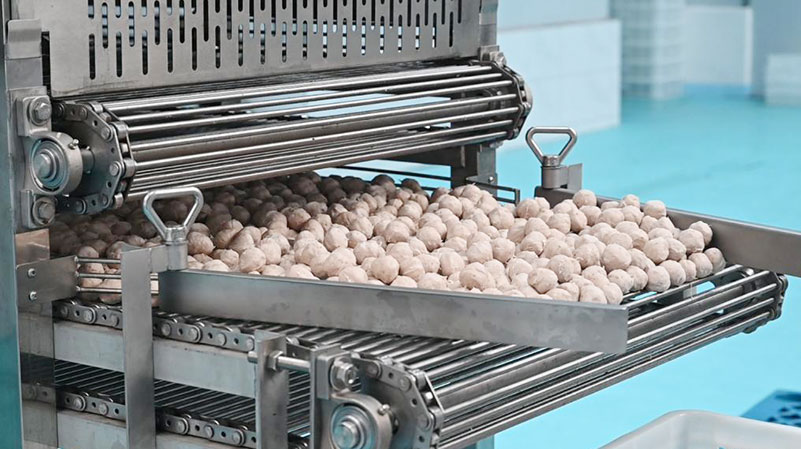
Neste blog, we will walk you through each stage of the industrial meatball production manufacturing process, highlight critical equipment in a linha de produção de almôndegas, and explain how automated systems can help businesses meet growing international demand.
1. Preparação de matéria -prima
The first step in the linha de produção de almôndegas is the preparation of raw meat. Typically, boneless beef, carne de porco, frango, or fish is trimmed and ground into a fine or coarse texture depending on the desired mouthfeel. The grinding size often ranges between 3–8 mm. Frozen meat blocks are thawed in advance using specialized defrosting equipment to preserve moisture and texture.
2. Meat Mixing and Seasoning
After grinding, the meat is transferred to an automatic mixer where it is blended with water, sal, amido, soy protein, and seasonings. This stage is critical to achieve a uniform texture and proper binding. The mixer in the linha de produção de almôndegas ensures even distribution of all ingredients, enhancing product consistency and taste.
Many systems use vacuum mixers to reduce air bubbles, improving density and shelf life. The final mixture has a dough-like texture suitable for shaping.
3. Forming and Portioning
Once mixed, the meat paste is fed into a forming machine. This machine shapes the meat into uniform balls using rotary molds or hydraulic extrusion systems. Diameter and weight can be precisely controlled, often ranging between 10–30 grams per meatball.
This stage is where the linha de produção de almôndegas ensures high-speed, continuous output. Some advanced systems can produce up to 300–500 meatballs per minute, making them ideal for high-volume commercial production.
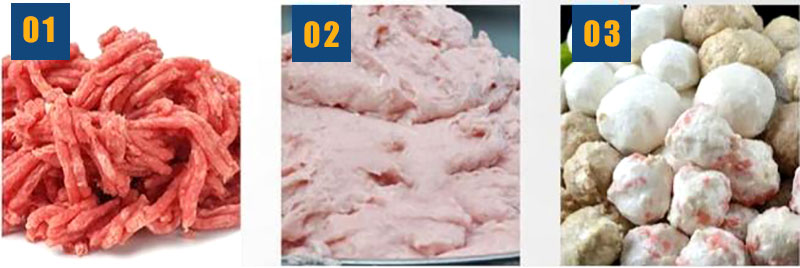
4. Pre-Cooking or Blanching
Depending on the recipe, formed meatballs may pass through a hot water blanching system or a steam cooker. This partial cooking step helps to set the shape, reduce microbial load, and firm the surface before freezing or further cooking. In some cases, a spiral or tunnel cooker is used as part of the integrated linha de produção de almôndegas to achieve consistent pre-cooking results.
5. Cooling and Drying
After blanching, meatballs are rapidly cooled using cold water or an air-cooling tunnel. Proper cooling helps stabilize the product and prepares it for freezing. Some linha de produção de almôndegas configurations include dewatering systems to remove excess surface moisture and prevent ice crystal formation during freezing.
6. Congelando
For frozen meatball products, an IQF (Congelamento rápido individual) tunnel is used. The meatballs are conveyed through the freezer at -18°C or lower to rapidly lock in freshness, textura, and nutrition. IQF technology prevents clumping, allowing each meatball to remain separate for easy packaging and later use.
7. Packaging and Labeling
Once frozen, the meatballs are weighed, sorted, and packed using automated machines. Vertical or horizontal form-fill-seal systems are common in the linha de produção de almôndegas, offering high speed and accuracy.
Packaging formats vary from retail pouches to bulk foodservice bags. Most systems also include date coding and labeling to ensure traceability and regulatory compliance.
8. Quality Control and Hygiene
Em todo o meatball production manufacturing process, quality control is essential. Key checkpoints include:
- Monitoring forming accuracy
- Checking core temperature post-blanching
- Ensuring freezing time and temperature compliance
- Oil and water quality control (if applicable)
- Visual inspection for shape, size, and surface quality
Automated meatball production lines often integrate metal detectors, checkweighers, and real-time inspection cameras to maintain food safety standards. Regular CIP (Clean-in-Place) procedures are conducted to uphold hygiene and ensure machine uptime.
Automated Meatball Production Line Benefits
An advanced linha de produção de almôndegas offers the following benefits:
- Qualidade consistente: Automated forming and cooking ensure uniform texture and flavor.
- High Efficiency: Systems can produce thousands of meatballs per hour with minimal labor.
- Food Safety Compliance: Hygienic design and real-time monitoring reduce contamination risks.
- Escalabilidade: Easily upgradeable lines support production growth as demand increases.
Conclusão
O meatball production manufacturing process involves a well-coordinated sequence of steps, from grinding and mixing to forming, culinária, and packaging. By investing in a modern linha de produção de almôndegas, food processors can enhance productivity, maintain strict quality standards, e reduzir os custos operacionais.
Whether you’re a frozen food manufacturer, a commercial kitchen, or a meat processing plant looking to scale, a reliable linha de produção de almôndegas is a smart long-term solution to compete in today’s global food market.
Looking to upgrade or build a new meatball production line? Contact us for a custom solution tailored to your production needs, capacity goals, and compliance requirements.





